Postdocs @ EPA
After completing doctoral studies, many researchers opt to spend the early stages of their careers at EPA. These postdoctoral researchers, or simply “postdocs,” pursue their research interests under the mentorship of scientists at EPA, leaders in their respective fields, and acquire essential skills for their future careers. We asked current participants and alumni of EPA’s various postdoc opportunities to share their experiences and accomplishments from their time at the agency. Read their responses below.
To stay current on research opportunities at EPA, sign up for the Early Career Research Fellowships and Training Opportunities at EPA listserv here.
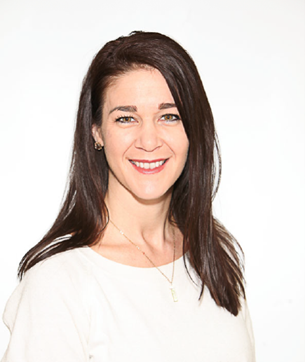
Melissa Martin, Featured Alumnus
How does your postdoctoral research at EPA help protect human health and the environment?
My postdoctoral research hopefully helps to protect human health and the environment through a number of different projects that I worked on while at EPA. One project used computational methods to better understand the neurotoxicity and developmental neurotoxicity (DNT) hazard potential of chemicals found in our environment. In another project, I led a team of experts during a rigorous review of the literature to curate a list of negative DNT reference chemicals that could be used to validate and increase the confidence of the proposed DNT New Approach Methods (NAMs) battery. Finally, I developed two new approaches methodologies for measuring electrical neural activity using microelectrode array (MEA) technologies (one where I used optogenetic approaches with differentiated human IPSCs and another using immobilized larval zebrafish (see below)). These new approaches aim to bridge any knowledge gaps among the proposed DNT battery of assays.
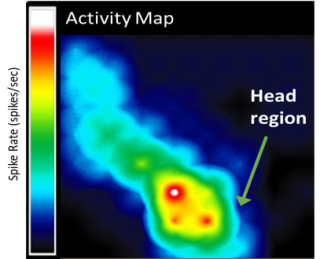
What accomplishment during your postdoc at EPA ORD are you most proud of?
The accomplishment that I am most proud of during my postdoc at EPA was developing and establishing two new approach methodologies from the funding that I received from Pathfinder Innovation Project Awards (an internal competition that provides EPA staff time and seed funding to pursue high-risk, high-reward research ideas). These new approaches are important for understanding and filling the gaps among the proposed DNT battery.
What skills/knowledge have you gained during your time at EPA that you find most valuable?
Some of the most invaluable skills that I have gained during my post-doc at EPA include self-motivation and taking complete ownership of my projects. In addition, as a post-doc managing several projects at once, I definitely honed my ability to multitask, effectively prioritize, and learn many things quickly. These, in my opinion, are some of the most invaluable life skills.
Do you have any advice for grad students and post-grads pursuing a postdoctoral position?
The most important thing, I believe, is finding yourself a great mentor who has your best interests in mind. Also, get involved and network! Get involved with employee groups, extra curriculars (sports teams, trivia teams, beer tasting, etc.), and conference groups (e.g., Society of Toxicology specialty sections), as you never know when you will meet someone that can be a valuable resource or can help you accomplish your next career goal. Finally, make sure to set aside some time to get to know the other post-docs. They are in the trenches with you and will often be there to offer ideas, empathy, kindness, and encouragement when you need it most! Also, they are likely to become lifelong friends!

Bevin Blake, Current Postdoc
How does your postdoctoral research at EPA help protect human health and the environment?
My postdoctoral work at EPA has helped protect human health and the environment through supporting human health risk assessments and related products. Specifically, I have contributed my knowledge in developmental and reproductive toxicology to IRIS assessments for vanadium and naphthalene. This work is important as human health risk assessment helps bridge the gap between primary research and policy decisions.
What accomplishment during your postdoc at EPA are you most proud of?
I think the accomplishment I am most proud of was winning EPA’s 3rd Annual Science on Earth Day trainee communication challenge. It was tough to think of an engaging way to explain some of the risk assessment related research I have contributed to during my postdoc, especially since my graduate school experiences with science communication were more focused on conveying bench-based research. It was challenging trying to develop a short, punchy explanation for something rather abstract like the development of a new approach for organizing mechanistic evidence for chemical toxicity. In the end, I was able to create an analogy comparing the organization of mechanistic evidence to tidying up your clothes (à la mode de Marie Kondo). It was so rewarding to tap into my creativity and create a story that made an abstract concept more tangible and relatable to the audience. I would strongly recommend current and future EPA trainees participate in this event to put your communication skills to the test!
What are you most excited to work on in 2023?
This year I am most excited to continue working on the assessment for 6:2 Fluorotelomer Sulfonate (6:2 FTS) for a few reasons. First, it’s the first assessment product for which I have had the role of Chemical Manager, which has been such a great learning experience. Second, the style of assessment product used for this chemical is new, so it will be really interesting to see how it is received by others. Third, 6:2 FTS is a per- and polyfluoroalkyl substance (PFAS), which are the class of chemicals I studied for my doctoral work, so it feels especially rewarding to continue contributing to the knowledge base on these important environmental contaminants.
What skills/knowledge have you gained during your time at EPA ORD that you find most valuable?
Prior to starting my postdoc at EPA, I had zero firsthand experience with the human health risk assessment process. This experience has allowed me to gain an entirely new skillset in the area of human health risk assessment, which includes systematic review and everything it entails (literature searching, screening, study quality evaluation, etc) as well as how to write hazard identification sections in risk assessments. I have also been challenged to think outside of the bench-based scientific box that I had experienced as a graduate student. While we do not conduct primary research in a traditional laboratory setting, scientists in my center are still able to apply principles of the scientific method to identify knowledge and/or functional gaps in the human health risk assessment space. For example, one of the products I’m leading aims to improve our ability to integrate evidence from new approach methods (NAMs) into risk assessments. This is a particularly important need as toxicological research is increasingly generated using NAMs rather than traditional animal models, but we are still exploring how to incorporate these data into human health risk assessments.
Do you have any advice for grad students and post-grads pursuing a postdoctoral position?
My advice is geared towards current grad students and post-grads who are curious about exploring postdoc positions outside of the lab. You might feel unsure if your lab-based training has provided you with the relevant skills that would transfer to work outside of the lab. Speaking from my own experience, there is an incredible amount of overlap between the skills required to be a successful research scientist and those required to be successful in many other lines of work: problem solving, project management, record keeping/data curation, working in teams, and effective communication, to name just a few. If you’re unsure of the specific skill(s) that are most important for an area of work you are interested in, reach out to current postdocs or professionals in that area to conduct a few informational interviews. Ask questions what their background is in and about what their day-to-day looks like to see if a postdoc in that field might be a good fit. Then go for it!

Laura Brunelle, Current Postdoc
How does your postdoctoral research at EPA help protect human health and the environment?
Our research uses non-targeted analysis to study and identify chemicals of emerging concern in wastewater, surface water, and drinking water. Non-targeted analysis allows us to see a larger picture than a targeted analysis, with hundreds to thousands of chemicals detected with a single method. Non-targeted analysis works “backwards” compared to targeted analyses, where instead of looking for compounds that we know or expect to be present, we look at what is present and work to identify these chemicals. This can help provide a more complete picture on what is present in a sample, and allows for detection of by-products, transformation products, previously undetected chemicals due to lack of targeted methods, and emerging contaminants yet to be identified. This is an important tool when examining contaminants of emerging concern especially in surface and drinking waters, which have direct impact on human and environmental health, as many chemicals present may not be included in targeted methods. When coupled with biological assays, non-targeted analysis can help determine chemicals that produce biological effects and work to identify known or unknown chemicals that may be toxic to environmental or human health.
Do you have any advice for grad students and post-grads pursuing a postdoctoral position?
My best advice is to do it, even if you are on the fence, apply! I started as a graduate student researcher in November 2020, completed my PhD in December 2022, and have transitioned to a postdoc in my same role. I never expected an opportunity like this while still in school. Honestly, I was intimidated moving 7+ hours away from home and school during a pandemic, but I have not regretted it. I have learned so much here, met amazing friends and colleagues, completed my PhD, and get to work on interesting projects that can help people and the environment. Everyone I have met here has been friendly and welcoming, they genuinely care about the work and love to talk about it, so do not be afraid to reach out about positions.

Adrien Wilkie, Current Postdoc
How does your postdoctoral research at EPA help protect human health and the environment?
One of the objectives of my research is to advance the understanding of relationships between environmental exposures and health to inform regulatory decision making that will then serve to protect human health and the environment. Too often the burden of reducing harmful exposures is placed on the individual. EPA is in the unique position to generate research that informs regulatory changes on a community or societal level. My collaborative postdoctoral research at EPA strives to inform decision making at this broader level. We all have a role to play in protecting human health and the environment; and, collectively, we may further improve our understanding and interventions on the world’s complex environmental public health challenges.
What skills/knowledge have you gained during your time at EPA that you find most valuable?
My relatively short time at EPA as a postdoc under the mentorship of Dr. Tom Luben has already been a rewarding experience filled with numerous research, training, and career development opportunities. It is challenging to identify a single skill I find most valuable – what has been most valuable to me is the overall advancement of myself as an independent environmental health researcher. Through this postdoc thus far, I have been able to 1) gain experience as a peer-reviewer internally and externally to EPA, 2) maintain and improve my geospatial and statistical analysis programing skills in SAS, R, and ArcGIS, 3) expand my knowledge of qualitative and quantitative research methods, 4) propose, prepare, and present environmental epidemiological research, and 5) develop meaningful collaborations with multidisciplinary researchers.
Do you have any advice for grad students and post-grads pursuing a postdoctoral position?
Determine why you are wanting to pursue a postdoctoral position (e.g., do you want to build a career in academia or the federal government). Once you have decided that pursuing a postdoctoral position is the right next step for you, consider your work-life priorities to help narrow your search (e.g., are there certain geographic regions you want to be located, are there specific researchers you want to work with, etc.) Prior to the start of your postdoc, brainstorm some goals for what you want to get out of the experience (e.g., learning a new technical skill, expanding your substantive area expertise, designing and implementing new research projects, etc.). Finally, within your postdoc position, try to identify a team of people – such as your mentor and other collaborators – that you like and respect who will train you to become a principal investigator as well as advocate for you as you figure out what comes after the postdoctoral position. I found these steps helpful for my own journey, and I am happy with my decision to be here.

Kelly Carstens, Featured Alumnus
How does your postdoctoral research at EPA help protect human health and the environment?
The focus of my postdoc work was to evaluate and integrate data from a set of developmental neurotoxicity (DNT) in vitro assays that were generated at EPA. My project contributed to a larger effort that strives to build a new paradigm of toxicity testing to reduce the reliance on animals, while moving towards in vitro predictive models that are more efficient and human relevant. Understanding the effects of chemical perturbations on neurodevelopment is complex and no single in vitro assay can recapitulate all processes in neurodevelopment, therefore integrating data across a battery of in vitro assays, representing diverse neurodevelopmental processes, is critical. My work was a first step in understanding how an integrated battery of in vitro DNT assays can perform in predicting chemicals with known evidence of in vivo DNT at EPA.
What accomplishment during your postdoc at EPA are you most proud of?
I was most proud of identifying some of the current limitations of using in vitro DNT assays to predict DNT outcome. More specifically, as a result of my analysis, we identified a list of false negative chemicals (chemicals that we expected to be bioactive in the DNT in vitro battery but were inactive) and determined that for several chemicals, we may be missing the chemical’s molecular target in the cell models used in the in vitro assay. Identifying gaps in our assays is valuable for building confidence in these methods and demonstrating application for regulatory decisions. This discussion led to the development of new, exciting projects, where we are currently working to generate molecular profiles for each of our cell models across development. This cell profiling database will not only improve our predictive models of DNT but will also help to identify biological gaps in the current DNT in vitro screening battery. Stay tuned!
What skills/knowledge have you gained during your time at EPA ORD that you find most valuable?
I think the computational skills that I have learned since joining my research team has been the most valuable. I have learned a lot about leadership, collaboration, and team building from my colleagues.
Do you have any advice for grad students and post-grads pursuing a postdoctoral position?
Get to know your colleagues! Your mentors and peers have a wealth of knowledge that will benefit you throughout your career. I encourage trainees to build a diverse team of people to help support your research experience.

Megan Culbreth, Featured Alumnus
How does your postdoctoral research at EPA help protect human health and the environment?
My research at EPA focused on the development of new approach methods for developmental neurotoxicity hazard evaluation. As environmental exposures likely contribute to the increased incidence of neurodevelopmental disorders in recent years, there is impetus to evaluate the numerous chemicals without toxicological data for potential developmental neurotoxicity hazard to protect human health.
What accomplishment during your postdoc at EPA are you most proud of?
I am very proud of all I was able to accomplish as an EPA postdoc. The highlights include publication of the method I developed for developmental neurotoxicity hazard evaluation, as well as the awards I received for that research. I am also very proud of the scientific relationships I was able to establish, as I will continue to look to these individuals as mentors, colleagues, and friends throughout the rest of my career.
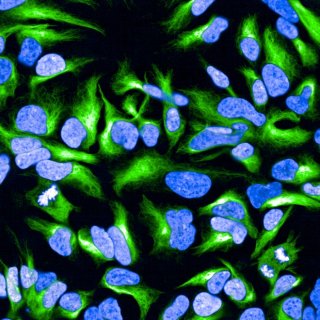
What are you most excited to work on in 2023?
I am most excited to expand my knowledge of regulatory toxicology. As I spent most of my postdoc in the lab, I am eager to see how this research will be applied for human health risk assessment and potentially influence international policy.
What skills/knowledge have you gained during your time at EPA ORD that you find most valuable?
The most valuable skill I gained was patience with myself and with others. Often in science, there are internal and external factors that can distort your perception of the time and energy required for achieving success. I learned my own limits in this postdoc and how to balance my expectations with that of others.
Do you have any advice for grad students and post-grads pursuing a postdoctoral position?
At a time when many opt not to pursue a postdoc after graduate school, I do not offer advice, but a perspective. My postdoc at EPA was the time in my scientific career that I had the most freedom to explore my own scientific interests. It also gave me a renewed perspective on my capabilities and the next steps in my career.
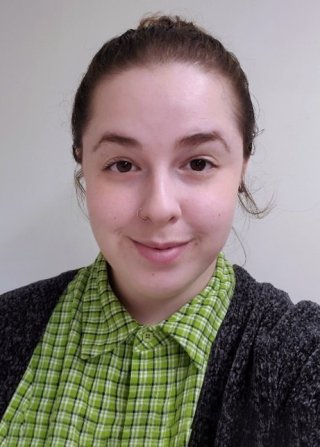
Emily Pitzer, Current Postdoc
How does your postdoctoral research at EPA help protect human health and the environment?
My research is focused on the development of adverse outcome pathways (AOPs), which are frameworks linking measurable key biological events together, beginning with a molecular initiating event and ending in an adverse outcome. I am developing neurotoxicity/developmental neurotoxicity AOPs, to aid in our mechanistic understanding of alterations in cognitive processes, like attention or learning and memory, that can occur following exposures of environmental compounds. I use prototypical neurotoxicants and proteomics approaches, as well as apply neurophysiological and behavioral measures as functional apical endpoints (an observable outcome in a whole organism) to aid in AOP development. This work will link in vitro New Approach Methods (NAMs) to adverse outcomes observed in vivo, gaining confidence in the in vitro to in vivo extrapolation and supporting the use of in vitro data for risk decisions, helping protect human health.
What accomplishment during your postdoc at EPA are you most proud of?
One accomplishment I am proud of is the data we have produced that will aid in adverse outcome pathway (AOP) development. In collaboration with the proteomics group at EPA, my lab and I are looking at proteomic changes in the nervous system after exposures to various known toxicants. These proteomic changes, which can be unique for various mechanisms of action, can then be applied to an AOP framework as measurable biological key events. AOPs are chemical agnostic, using mode of actions rather than compounds for the initiating events, and because of this they can aid in regulation of environmental compounds for risk decisions. I am proud of the proteomic data we have generated thus far, and I am excited for our follow up experiments that will further the development of several AOP models.
What are you most excited to work on in 2023?
During 2023 I am looking forward to applying our data to create AOP frameworks for neurotoxicity and developmental neurotoxicity outcomes to add to the AOP-Wiki. We have been assessing proteomic changes following the exposure to prototypical neurotoxicants, examining the protein signatures generated by chemicals of varying mechanisms of action. In addition, we have been assessing neurophysiological changes and apical behavioral endpoints to apply to AOP models for the various modes of actions being impacted. This work is a multi-group effort, with collaborators measuring proteomic changes in vitro using the same chemicals. This work will enable corroboration between in vitro and in vivo data and applying this translational data to the AOP framework.
Do you have any advice for grad students and post-grads pursuing a postdoctoral position?
My advice for grad students and post-grads pursuing a postdoctoral position is to follow something you are passionate about. Research can be all encompassing at times and passion in the projects you are working on is necessary. I have always enjoyed translational research, spanning molecular and cellular changes to functional measures like neurobehavioral responses, and my work has applied this interest, generating pathways for adverse neurotoxicant events. In addition, I have always desired a career path that has implications for public health. My work at EPA spans beyond basic science to research that can affect real change, aiding in policy decisions and protecting human health and the environment.
Rebecca Panko, Featured AAAS S&TP Fellowship Participant
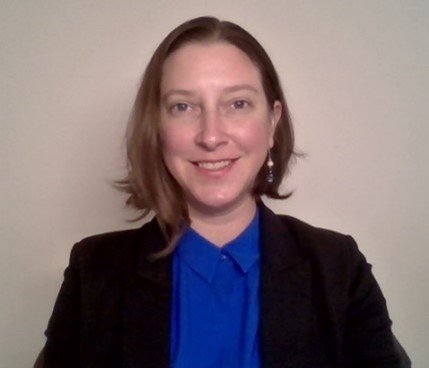
How does your postdoctoral research at EPA help protect human health and the environment?
I contribute to multiple projects that serve to protect human health and well-being from the negative environmental impacts of climate change. My background is in urban systems, and one project I’m contributing towards involves assessing the role of greenspace in mitigating climate stress (ex: heat-related illness and mortality) in cities.
What accomplishment during your postdoc at EPA are you most proud of?
I’m proud of being contributing member of the interagency Federal Steering Committee for National Nature Assessment. I’m also proud that I’ve been able to assist EPA staff with the creation, development, and implementation of research topics and assessments.
What are you most excited to work on in 2023?
The National Nature Assessment and the projects involving urban greenspaces and forests.
What skills or knowledge have you gained during your time at EPA that you find most valuable?
I’ve improved my interpersonal, teambuilding, and leadership skills. I’ve gained knowledge about best practices and strategies to employ when tackling extremely complex and complicated environmental issues that span spatial and temporal scales.
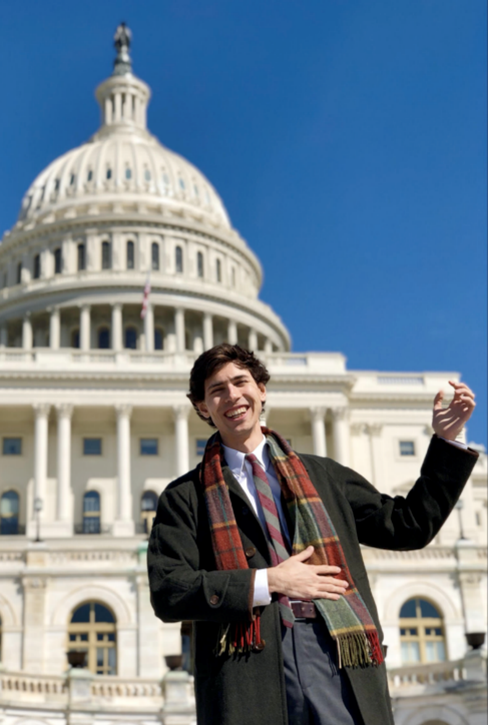
Martin Wolf, AAAS S&TP Fellowship Alumnus
How does your fellowship training at EPA help protect human health and the environment?
Climate change poses a serious threat to everyone's health and safety. Decision-makers around the world are eager to enact policies to mitigate its adverse effects, but the lack of timely and comprehensive scientific data on greenhouse gas emissions often limits these efforts. My AAAS Fellowship at EPA facilitates policy development efforts by providing scientific information on emissions estimates in a useful format – both at home and abroad. At EPA, I support the National Greenhouse Gas Inventory team through research on industrial emissions of fluorinated greenhouse gases (F-gases) that are commonly used in refrigerators and air conditioners. As developing countries increasingly rely on refrigeration and air conditioning to cope with hotter temperatures, emissions of these “F-gases” are rising rapidly. The global warming potential of F-gases is thousands or tens of thousands more than carbon dioxide. I developed tools for the Transparency Accelerator for Greenhouse Gas Inventories initiative to build the capacity of developing countries to estimate F-gases and other greenhouse gas emissions. The initiative enables policymakers to implement more informed climate mitigation and adaptation solutions.
What accomplishment during your fellowship training at EPA are you most proud of?
Every country has a role to play in reducing global greenhouse gas emissions and avoiding the most devastating impacts of climate change. I am proud to serve on the EPA’s Transparency Accelerator for Greenhouse Gas Inventories – a capacity building initiative that helps developing countries improve their emissions estimates. The United States is a leader in climate change research, and scientists like me can help the world achieve international emissions targets by sharing our technical expertise with our counterparts in developing countries. I regularly engage with environmental and health ministries around the globe to train fellow researchers on tools to estimate emissions, improve greenhouse gas inventories, and pinpoint data-driven climate policy insights. Climate change is a truly global crisis that demands a global response, and I feel privileged to have grown as a member of the international scientific community during my Fellowship training at EPA.
What are you most excited to work on in 2023?
As the world emerges from the COVID-19 pandemic and grasps for some semblance of normalcy, I am excited to begin traveling for my training at EPA. I just returned from a capacity building trip to South Africa, where I was reminded that there is no substitute for a handshake, a compassionate smile, and a physical presence for establishing rapport with international colleagues and experiencing firsthand the obstacles that developing countries face on the road to a more sustainable future. I hope to return to South Africa – and perhaps travel to other countries – to train my counterparts on tools for improving greenhouse gas inventories and gain a deeper, personal understanding of data limitations and success stories of recently enacted climate policies.
What skills or knowledge have you gained during your time at EPA that you find most valuable?
One of my most valuable lessons learned is that effective climate solutions are based on an interdisciplinary understanding of sustainable development. My AAAS Fellowship at EPA has provided invaluable training in working on teams of scientists, economists, lawyers, and engineers who apply varied skill sets to reach a common goal: solving climate change. I have learned firsthand that other disciplines use different tools, speak with different terminology, and have different values. Sometimes these differences are a barrier. But my training has also helped me appreciate that the diversity of viewpoints that my interdisciplinary colleagues hold ultimately helps make our policies and tools more resilient, equitable, and effective.
Do you have any advice for candidates pursuing a fellowship training position at EPA?
One of the most exciting, but also most challenging, aspects of being a fellow at EPA is the great number of projects I get to participate in. The trick to success is not letting the perfect be the enemy of the good. Work at a federal agency is a bit like eight people playing tug-of-war with an octopus. No-one quite gets everything they want – especially the octopus! But learning to manage the give-and-take of conflicting priorities is a valuable experience and a requisite to working effectively in the fast-paced policymaking arena that is Washington, D.C.

Dr. Kenna Rewcastle, Featured AAAS S&TP Fellowship Participant
How does your fellowship training at EPA help protect human health and the environment?
By supporting the U.S. Greenhouse Gas Inventory as well as engaging in capacity building efforts to allow other countries to develop their own greenhouse gas emissions estimates, I am improving our global understanding of a future characterized by climate change. My training program produces information that empowers the United States and the international community to design, implement, and enforce evidence-based climate change mitigation policies.
What accomplishment during your fellowship training at EPA are you most proud of?
I am most proud of organizing and leading a week-long workshop in Vietnam to train Vietnamese greenhouse gas (GHG) inventory compilers in the use of EPA-developed software to allow them to estimate GHG emissions and sinks from the agriculture, forestry, and land use sectors.
What are you most excited to work on in 2023?
In 2023, I am most looking forward to continuing my work with international GHG inventory capacity building projects. I am also excited to continue developing an analytical framework to more comprehensively incorporate GHG emissions from wildfires into EPA’s U.S. GHG Inventory.
What skills or knowledge have you gained during your time at EPA that you find most valuable?
The skills that I’ve gained during my Fellowship training at the EPA span a wide spectrum and include international diplomacy and bilateral collaboration, long-term project management, and an expert understanding of the underlying methodologies and data sources used to account for GHG emissions in the United States and globally.
Do you have any advice for candidates pursuing a fellowship training position at EPA?
My advice to those seeking a Fellowship training at the EPA would be to find a position that exposes them to as many aspects of the EPA’s mission as possible. During my training, my knowledge of environmental policy development, implementation, and enforcement has been bolstered by my participation in interagency working groups, my engagement with the GHG inventory data collection and reporting process, and through the development of relationships with technical experts and community stakeholders.
Editor's Note: The opinions expressed herein are those of the researcher alone. EPA does not endorse the opinions or positions expressed.
